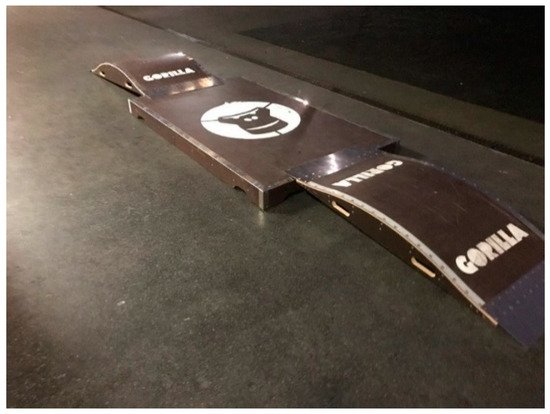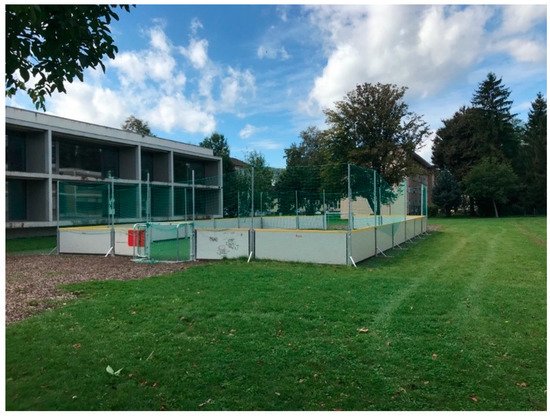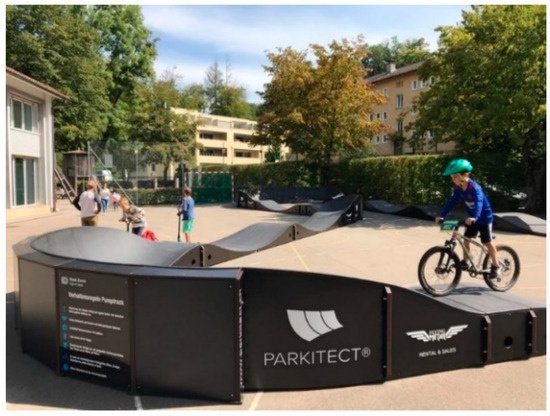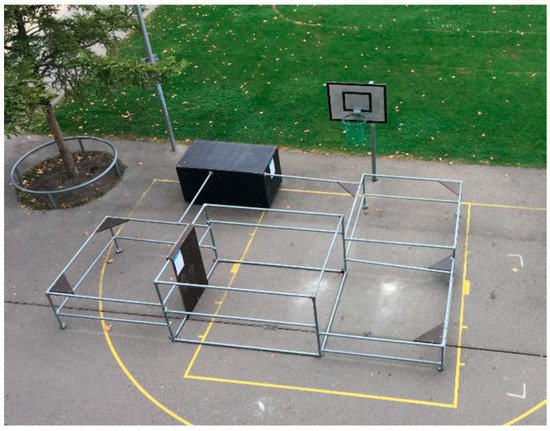You're using an outdated browser. Please upgrade to a modern browser for the best experience.
Please note this is a comparison between Version 2 by Conner Chen and Version 1 by Ilaria Ferrari.
With regard to school-related physical activities, extended educational sports activities become more important in all-day schools. These activities include supervised sports classes after lessons, unsupervised opportunities during lunchtime, and free physical activities during recess, as well as before and after lessons.
- physical activity (PA) and exercise opportunities
- all-day schools
- extended education
1. Introduction
Parallel to the development of all-day schools in Germany, all-day schools are being introduced in Switzerland, especially in urban areas. This leads to children and adolescents’ being able to spend more time at school, during lunchtime and after lessons in the afternoon. The more structured everyday life of adolescents is regarded as expanding the public mandate of extended education [1,2][1][2]. Furthermore, the global problem of inactivity among children and adolescents is recognized by scholars as an increasing school-related responsibility for fostering physical exercise and movement in children and adolescents as they grow up [3,4][3][4].
With regard to school-related physical activities, extended educational sports activities become more important in all-day schools [5]. These activities include supervised sports classes after lessons, unsupervised opportunities during lunchtime, and free physical activities during recess, as well as before and after lessons. New types of PA and sports opportunities are presented to the students. Among other things, these opportunities enable a movement-oriented rhythmization of the school day and connect the students to their living environment [3] (p. 437).
Extended educational sports programs are located at the interface between curricular physical education and club training. They occupy a position between formal, non-formal, and informal learning opportunities and between care time and education [6]. Thus, they characterize a new field of learning and encounters that are neither compulsory instruction nor recreational or sports clubs. Furthermore, they provide infrastructure for students to link their school experiences with their living environment through PA. The opportunities offered include playful engagement with movement, competitive events, and training, as well as recreation and social learning [7].
All-day schools have the potential to organize PA and exercise for children and adolescents [4]. Additionally, they enable school administrators to link school-based with out-of-school learning opportunities. In this article, we focus on unaccompanied PA and exercise opportunities that are temporarily made available for free use on school grounds in the shape of pop-up facilities.
2. “Sport in the School Environment”, a School Development in Urban Switzerland
A schoolyard is a specific form of free space for children and adolescents. It is a space where they can receive partially unsupervised extended education as well as spend leisure time. This space and the available infrastructure have different functions which serve as a contrast to the time that is reserved for instruction and regulated by adults cf. [10][8]. The schoolyard is an active place “of movement and recreation” [11][9] (p. 575). Breaks and the schoolyard serve to structure curricular and free time. They provide opportunities for relaxation and peer-led interaction. It is a place of free play, movement, and social action. The arranged infrastructure serves to expand the ability to act and is therefore even more significant for children at all-day schools, who spend more time at school cf. [12][10]. The implementation of an all-day school at elementary schools and the broad introduction of all-day schools involved considerations and concretizations regarding the expansion of extended educational opportunities as non-formal and informal learning environments. This increased the importance of designing extended space and time in terms of structure, processes, and goals. Extended care hours opened new possibilities for the design and provision of supervised, non-instructional time. Sports and movement were to be central elements in the design of the extended school day, along with other cultural and aesthetic educational engagements. A wide range of factors influence PA in general terms. The family context certainly plays a key role in early childhood, however, as the family is generally the first and initially the only field of action for children [13][11]. Children are offered more or less opportunities for sport-related experience to shape their sporting activity, depending on the socio-cultural background of their parents and their understanding of education. Numerous studies on children’s PA confirm that children and adolescents from households with lower socioeconomic status are less likely to be physically active than their peers with a higher socioeconomic status [14,15,16,17][12][13][14][15]. With regard to migration background, knowledge of the parents’ native language and country of origin is also absolutely necessary, as sport has a different status in different countries and their particular cultures and traditions. Children with a migration background can, of course, not be viewed as a socially homogeneous group and their situation cannot be generalized in all respects. However, sports participation is generally lower among children with a migration background than among those without a migration background [18][16]. The project “Sport im Lebensraum Schule” (Sports in the School Environment), supported by the Federal Office of Sport (BASPO, Bundesamt für Sport), has the goal of developing, implementing, and evaluating exercise-oriented extended educational opportunities at 14 pilot public schools in Zurich. These schools implemented extended educational opportunities before and after lessons in the 2019/20 school year, as they were the first ones to be called all-day schools. These urban public schools are located in different and diverse neighborhoods in the city of Zurich. Their principals agreed to try out the suggested PA activities for two years. Four extended educational elements were implemented: 1. The organization of an open gym (low-threshold PA and exercise opportunities that children could use flexibly and without registration) during lunchtime; 2. supervised sports classes (poly-sportive and discipline-specific sports courses that were attended throughout the school year) in the late afternoon after lessons ended (at approximately 3:30–4:30 p.m.); 3. the design of physical activities and exercise programs before and after classes and during recess; and 4. the temporary installation of four different pop-up facilities for free use (referred to herein as “pop-ups”, including “Parkour”, “Pumptrack”, “Skatepark”, and “Streetsoccer”). Lessons at Swiss public schools are generally held from 8 a.m. to 12 noon and from 2 to 4 p.m. Care time before and after the lessons and during lunchtime must be organized and paid for by the families. Only at all-day schools are these times offered upon request. Through the design of the schoolyard and the placement of pop-ups in the schoolyard, all-day school and leisure time structurally overlap. This creates non-formal and informal learning opportunities that provide a space for interdisciplinary and subject-specific learning. Thus, the pop-ups in the schoolyard represent a space for non-immediate educational processes, which provides the opportunity to harmonize and align the school with extended educational places and processes [10][8]. The objective of the integrative synthesis of education and leisure at all-day schools can be assessed through the pop-ups in the schoolyard. The effectiveness of these pop-ups is theoretically based on a service utilization model [19][17]. The central message of this model is that teaching does not simply have a direct influence on the students, but rather that a teacher can only offer learning opportunities that can be used by the students and lead to the desired effects [20][18]. Learning is understood here as an active, self-directed, and individual process that can vary depending on a willingness to make an effort, learning strategy, and curricular and extracurricular learning activities. The effects are thus based on the use of learning opportunities and are related to the individual learning conditions of the students, such as motivation and cognitive learning potential, as well as motor learning potential, in the case of sport-oriented learning opportunities. This differential learning potential is in turn related to the stimulation and encouragement children receive within the family, to contextual factors, and to cultural frameworks. This opportunity–use model serves as an orientation framework for possible causal relations. Thus, the effectiveness depends on the attractiveness of the facility and how well it is fit for its purpose, as well as the access to and use of the facility. Therefore, the aim is to answer two main questions:-
How are these unsupervised PA and exercise-oriented extended opportunities used by different groups of children and adolescents (age-specific and with regard to gender and migration background) at all-day schools?
-
How does the use of the free pop-ups relate to supervised PA and exercise-oriented opportunities?
- How are these unsupervised PA and exercise-oriented extended opportunities used by different groups of children and adolescents (age-specific and with regard to gender and migration background) at all-day schools?
- How does the use of the free pop-ups relate to supervised PA and exercise-oriented opportunities?
Pop-Up Facilities—An Innovative Idea for PA Promotion
All schools participating in the project had the opportunity to ask for pop-ups, which were installed in the schoolyard, usually for 4–8 weeks. The pop-ups were not explicitly supervised and were also available for free use outside of school hours and on weekends.
As mentioned above, four pop-ups were offered:
“Skatepark”: “Skatepark” (Figure 1) consists of modular park elements for cycling and roller sports, on which cycling and roller vehicles (e.g., BMX, kickboard, skateboard, inline skating, etc.) can be ridden. The space requirement is flexible, as the modules can be set up as a track or landscape, completely or partially. They cover about 20 to 50 m2.


Figure 1.
Elements of the skatepark.
“Streetsoccer”: “Streetsoccer” (Figure 2) is a perimeter field with weight plates and a ground anchorage, including a net catcher. Football and floorball can be played on the field. The field is at least 15 m long and 6 m wide and can be set up on fine surfaces, grass, artificial turf, and wood chips.


Figure 2.
Streetsoccer.
“Pumptrack”: “Pumptrack” (Figure 3) is a wave-trough track built from prefabricated elements for cycling and roller sports. Equipment that can be used on the track includes MTB, BMX, kickboard, skateboard, and inline skates. The space requirement is flexible but should be at least 20 m long and 20 m wide. The “Pumptrack” can be set up as a straight line, ring, or track and can be placed on a flat fine surface, such as concrete, asphalt, plastic, etc.


Figure 3.
Pumptrack.
“Parkour”: The “Parkour” facility (Figure 4) is a construction made of iron bars and composite plates for practicing parkour-specific movement patterns. Among other things, it can be used for practicing forms of movement, such as climbing, shimmying, jumping, skipping, and crossing over and under. The space required is 10 m × 10 m or 5 m × 18 m. The facility can be set up on various surfaces and does not require anchoring.


Figure 4.
Parcour.
Social workers and teachers were introduced to a safe, correct, and adequate use of the respective facilities. They also received advice on how to teach the respective movement possibilities. Appropriate introductory workshops were also held for school classes. The temporary installation of the pop-ups on the school grounds is an innovative measure that has not yet been implemented or investigated in the school context.
References
- Kuhn, H.P.; Fischer, N.; Schoreit, E. Soziales Lernen von Jungen und Mädchen in der Ganztagsschule. Zur Bedeutung der Mitbestimmung in den Angeboten für die Entwicklung der schulbezogenen sozialen Verantwortungsübernahme. In Was Sind Gute Schulen? Teil 4: Theorie, Praxis und Forschung zur Qualität von Ganztagsschulen; Fischer, N., Kuhn, H.P., Tillack, C., Eds.; Prolog-Verlag: Immenhausen bei Kassel, Germany, 2016; pp. 148–167. ISBN 9783934575912.
- Rauschenbach, T. Ganztagsschule–ein Projekt ohne Konzept. In Bildung über den Ganzen Tag. Forschungs- und Theorieperspektiven der Erziehungswissenschaft; Hascher, T., Idel, T.-S., Reh, S., Thole, W., Tillmann, K.-J., Eds.; Barbara Budrich: Opladen, Germany; Berlin, Germany; Toronto, ON, Canada, 2015; pp. 23–37.
- Laging, R. Bewegung und Sport. In Handbuch Ganztagsbildung; Bollweg, P., Buchna, J., Coelen, T., Otto, H.-U., Eds.; Springer Fachmedien Wiesbaden: Wiesbaden, Germany, 2020; pp. 437–451. ISBN 978-3-658-23229-0.
- Neuber, N. Fachdidaktische Konzepte Sport: Zielgruppen und Voraussetzungen; Springer: Wiesbaden, Germany, 2020; ISBN 978-3-658-28463-3.
- Züchner, I. Kooperation von Schulsport und Sportverein: Entwicklungspotential für außerunterrichtliche Sportangebote in Ganztagsschulen. Sportunterricht 2014, 63, 374–379.
- Neuber, N. Zwischen Betreuung und Bildung–Bewegung, Spiel und Sport in der Offenen Ganztagsschule. Sportunterricht 2008, 57, 180–185.
- Holtappels, H.G.; Serwe, E. Bewegung und Sport-ein Förderbereich in Ganztagsschulen? In Jahrbuch Ganztagsschule 2010, Vielseitig Fördern; Appel, S., Ludwig, H., Rother, U., Eds.; Wochenschau: Schwalbach, Germany, 2010; pp. 67–78.
- Harring, M.; Peitz, J. Freizeit im Kontext von Ganztagsbildung. In Handbuch Ganztagsbildung; Bollweg, P., Buchna, J., Coelen, T., Otto, H.-U., Eds.; Springer Fachmedien Wiesbaden: Wiesbaden, Germany, 2020; pp. 795–809. ISBN 978-3-658-23229-0.
- Kamski, I. Mitagessen und Schulhof. In Grundbegriffe Ganztagsbildung: Das Handbuch, 1st ed.; Coelen, T., Otto, H.-U., Eds.; VS Verlag für Sozialwissenschaften: Wiesbaden, Germany, 2008; pp. 566–575. ISBN 9783531153674.
- Hünersdorf, B. Spiel-Plätze. In Handbuch Ganztagsbildung; Bollweg, P., Buchna, J., Coelen, T., Otto, H.-U., Eds.; Springer Fachmedien Wiesbaden: Wiesbaden, Germany, 2020; pp. 823–834. ISBN 978-3-658-23229-0.
- Richter, M. Soziale Determinanten der Gesundheit im Spannungsfeld zwischen Ungleichheit und jugendlichen Lebenswelten: Der WHO-Jugendgesundheitssurvey. In Gesundheit, Ungleichheit und Jugendliche Lebenswelten. Ergebnisse der Zweiten Internationalen Vergleichsstudie im Auftrag der Weltgesundheitsorganisation WHO; Richter, M., Hurrelmann, K., Klocke, A., Melzer, W., Ravens-Sieberer, U., Eds.; Juventa: Weinheim, Germany; München, Germany, 2008; pp. 9–37.
- Greier, K.; Riechelmann, H. Effects of migration background on weight status and motor performance of preschool children. Wien. Klin. Wochenschr. 2014, 126, 95–100.
- Haut, J.; Emrich, E. Sport für alle, Sport für manche. Sportwiss 2011, 41, 315–326.
- Schmidt, W. (Ed.) Sozialstrukturelle Ungleichheiten in Gesundheit und Sport–Chancen des Sports; Hofmann: Schorndorf, Germany, 2008.
- Zerle, C. Lernort Freizeit: Die Aktivitäten von Kindern zwischen 5 und 13 Jahren. In Kinderleben–Individuelle Entwicklungen in Sozialen Kontexten; Alt, C., Ed.; VS Verlag für Sozialwissenschaften: Wiesbaden, Germany, 2008; pp. 345–366. ISBN 978-3-531-16165-5.
- Lampert, T.; Mensink, G.B.M.; Romahn, N.; Woll, A. Körperlich-sportliche Aktivität von Kindern und Jugendlichen in Deutschland. Ergebnisse des Kinder- und Jugendgesundheitssurveys (KiGGS). Bundesgesundheitsblatt Gesundh. Gesundh. 2007, 50, 634–642.
- Helmke, A. Unterrichtsqualität und Lehrerprofessionalität. In Diagnose, Evaluation und Verbesserung des Unterrichts, 7th ed.; Klett-Kallmeyer: Seelze, Germany, 2017.
- Reusser, K.; Pauli, C. Unterrichtsgestaltung und Unterrichtsqualität-Einleitung und Überblick. In Unterrichtsgestaltung und Unterrichtsqualität-Ergebnisse Einer Internationalen und Schweizerischen Videostudie zum Mathematikunterricht; Reusser, K., Pauli, C., Waldis, M., Eds.; Waxmann: Münster, Germany, 2010.
More
